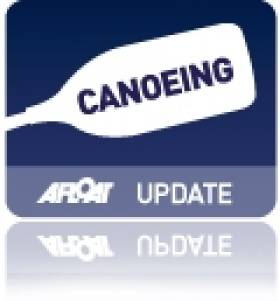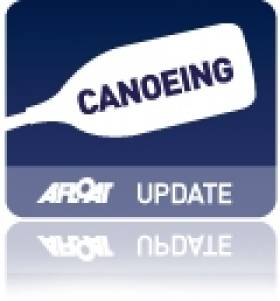Displaying items by tag: Sprint,
Watkins Impresses at Canoe Sprint World Cup
# CANOEING: Barry Watkins had an excellent first day at the Canoe Sprint World Cup in Duisburg in Germany. He qualified for the A Final of the K1 500 metres, winning his heat and placing third in the semi-final. He also reached the B Final in the K1 1,000 metres. Jenny Egan made it to the semi-finals of the K1 500 metres.
Canoe Sprint World Cup Two, Dusiburg (Selected Results; Irish interest)
Men
K1 1,000 Semi-Final: 5 B Watkins 3:39.586
K1 500 – Heats Three: 1 Watkins 1:45.552. Semi-Final Three – 3 Watkins 1:42.705
Women
K1 500 Semi-Final: 8 J Egan 2:06.936
#CANOEING: Two Ireland boats have qualified for tomorrow’s finals at the European Olympic Qualifier for canoe sprint in Poznan in Poland. Andrzej Jezierski won his heat of the C1 200, while Jenny Egan came through a semi-final to make the final of the K1 500 metres. She also has a chance of making the K1 200 metres final, as she has qualified for the semi-final.
Jezierski is a former world champion with his native Poland who now lives and works in Co Cork. He has been training at the National Rowing Centre at Farran Wood and recently declared for Ireland.
European Canoe Sprint Olympic Qualifier, Poznan, Poland (Irish interest)
Men
C1 200 – Heat One (First Three to Final): 1 Ireland (A Jezierski) 43.451, 2 France (T Simart) 43.739, 3 Romania (J Chirila) 44.739.
K1 200m – Heat One (First to A Final; 2-7 to semi-finals): 8 Ireland (S Marchetti) 43.825.
K1 1,000m – Heat Three (1st to Final; rest to Semi-Final): 5 N Fleming 3:48.069. Semi-Final (1-3 to A Final): 5 Fleming 3:45.819
K2 200m – Heat One (1-3 to Final; 4-7 plus one best time to Semi-Final): 8 S Marchetti/V Peirce 36:549. Semi-Final (1-3 to Final): 8 Marchetti/Peirce 35.645.
Women
K1 500 – Heat Two (1-3 to Final; 4-7 plus one best time to Semi-Final): 5 J Egan 2:02.124. Semi-Final (1-3 to A Final): 1 Norway (MV Larsen) 2:01.083, 2 Spain (M A Portela) 2:01.363, 3 Egan 2:02.215
K1 200 – Heat Two (1-3 to Final; 4-7 plus next best time to Semi-Final): 5 Egan 46.264.

























































